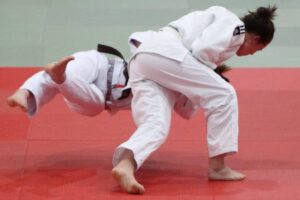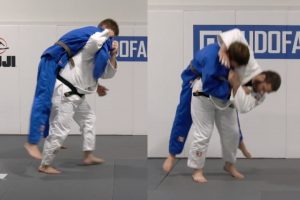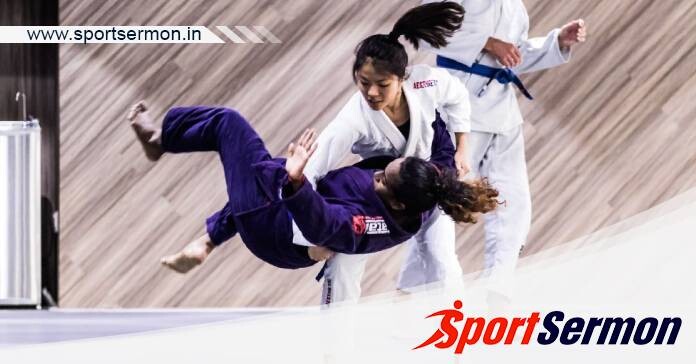BJJ Judo Throws: Brazilian Jiu-Jitsu is a martial art that has become extremely famous all over the world due to its extremely powerful ground combat and submission techniques. In the realm of BJJ, takedowns, on the other hand, are frequently underappreciated while being essential to winning a match. With its extensive history of throws and takedowns, jiu-jitsu provides a useful skill set that may greatly improve a BJJ practitioner’s technique. Our examination of the top 4 Judo throws for Jiu-Jisu in this piece will include their practicality, uses, and tactical benefits.
Advantages Of Judo Training To Boost Your BJJ

Although the techniques used in Judo and BJJ are generally quite similar, they emphasise distinct elements of the game. When it comes to throwing techniques while wearing a uniform, Judo is generally regarded as the best martial art. The standup is Judo’s main emphasis, and their throws are quite powerful. Conversely, Jiu-Jitsu is renowned for its complex guard techniques and fluid ground moves. Many techniques have been created to support the ground combat aspect of BJJ bouts, which make up the majority of these matches. Enhancing one’s grappling skills may be achieved by combining these two disciplines.
Let’s now go over a few of the top throws in Brazilian Jiu-Jitsu.
You might also be interested in reading this: How BJJ Ankle Picks Are Used?
The Major Outer Reap of Osoto Gari
One of the core throws in Judo, the Osoto Gari is very practical and adaptable when used in BJJ. The key to this throw is to draw your opponent to the side or forward in order to throw them off-balance. When your opponent becomes unbalanced, sweep their leg from the outside and stride across their body with the leg you are holding. This will knock them off balance and into the mat.
Because of its ease of use and versatility, the Osoto Gari is a preferred takedown for BJJ practitioners of all skill levels. It may be set up from a variety of grips and positions, so you can finish your opponent off while holding a strong top position or slickly switching to a commanding ground position.
In BJJ, the Osoto Gari’s usefulness against opponents who frequently pull guard is one of its main advantages. You can control the tempo of the game and prevent them from guard-pulling attempts by making this throw swiftly.
Lastly, the Osoto Gari is useful in MMA and No-Gi grappling. In order to try to catch your opponent off-balance before the throw, it’s important to establish a solid connection with them.
Uchi Mata—Throw from the Inner Thigh
The Uchi Mata is another really effective Judo throw that you can quickly add to your BJJ repertoire. Sweep your opponent’s inner thighs and raise their leg to throw them off-balance. Having control over your opponent’s upper body and timing are crucial to a successful Uchi Mata.
When your opponent adopts a low posture or tries to pull guard, the Uchi Mata might shift the course of the game. You may acquire an advantageous top position and stop them from engaging in guard by using the Uchi Mata. This opens the door for a more powerful ground game.
Because of the Uchi Mata’s adaptability, you may use it from a variety of gripping techniques, matching your opponent’s style and building a comprehensive takedown arsenal in your BJJ repertory.
This technique may be used in No-Gi grappling much as the previous one. When employing the Uchi Mata without the Gi, be mindful to examine the variations in setup.
Harai Goshi (Deep Hip Displacement)
A strong Judo throw, the Harai Goshi uses your hips and legs to take your opponent off their feet. Effective Harai Goshi requires you to come in close to your opponent, wrap your leg around theirs, and launch the throw with your hips.
When trying to pass your guard or deal with opponents that put a lot of pressure, the Harai Goshi may be a useful tactic in BJJ. Using the Harai Goshi, you may quickly make space, unbalance your opponent, and knock them to the ground. This provides you with opportunities to improve your guard play or move into a more commanding position in addition to helping you impede their passing efforts.
Harai Goshi is a valuable addition to your BJJ repertoire because of its versatility and capacity to counter pressure techniques. It provides an option to pull a guard or depend just on ground-based techniques.
For those who enjoy No-Gi, this is the Harai Goshi in No-Gi form. As you prepare to throw, keep in mind to obtain a deep underhook.
Seoi Nage (Shoulder Throw)
A traditional Judo throw that may be used in BJJ is the Seoi Nage. Using your opponent’s momentum and your own body mechanics to toss them over your shoulder and onto the ground is the fundamental element of Seoi Nage. It’s a tactic that calls for proficiency, repetition, and the capacity to interpret your opponent’s motions.
To try Seoi Nage, you must first throw your opponent off balance. To throw them off balance and get them to lean in towards you, you can gently tug them forward or to the side. Put yourself in a position where your hips nearly contact that of your opponent. Your opponent should be square with your body. With your lead foot (the side of your gripping hand), take a large stride forward as you begin the throw by pivoting on the balls of your feet. At the same time, bend your knees to reduce your level. Complete the throw by rotating your body and going under your opponent’s centre of gravity.
In summary

Adding Judo throws to your repertoire of BJJ techniques may revolutionise your takedown strategy and increase your efficacy on the mat. The throws we covered today give BJJ practitioners a variety of adaptable ways to subdue opponents, establish superior positions, and take control.
It takes constant practice, an emphasis on correct technique, and customisation to the unique dynamics of Brazilian Jiu-Jitsu to become proficient in these throws. With practice and commitment, these Judo throws may become effective weapons in your BJJ toolbox, enabling you to establish dominating positions, manage the tempo of a battle, and ultimately enhance your performance on the mat.

